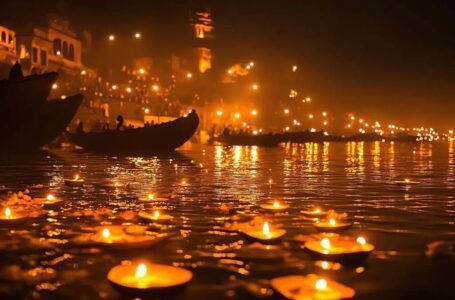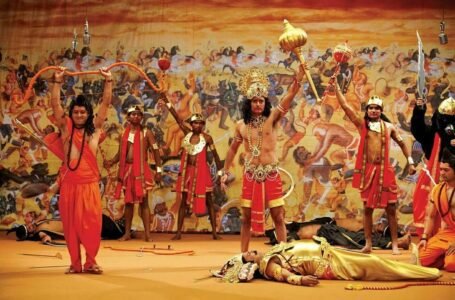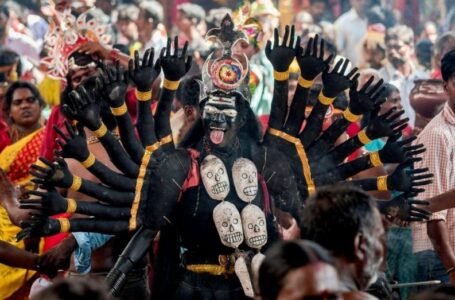Nagabhata I – The North’s Shield and the Emergence of the Gurjara-Pratiharas

-Arushi Kastwar
In the rich canvas of Indian history, interwoven with the deeds of brave kings and visionary dynasties, the legend of Nagabhata I, the first Gurjara-Pratihara founder king, is a saga of strength, rebirth, and defiance. Hailed as the “Shield of the North,” Nagabhata I not only established the foundation of one of the greatest medieval Indian empires, but also protected the Indian subcontinent from one of the earliest Arab invasion waves. His rule represents the renaissance of a Hindu polity in northern India when the political scenario was disintegrated and threatened by foreign invasions.
Historical Context: India in the 8th Century
The 8th century CE was a period of turmoil in Indian history. The great Harshavardhana Empire had fallen, and northern India was fragmented into various tiny kingdoms. There was no unifying force, and thus the region was exposed to foreign aggression, especially from the west. The Umayyad Caliphate, led by its military commanders, had already overrun Sindh under Muhammad bin Qasim in the early 8th century. Their eyes went further east into the Indian subcontinent.
When kingdoms such as those of the Rashtrakutas in the Deccan and the Palas in the east started asserting themselves, north-western India required a protector — an entity that could stop the Arab advance and safeguard Indian cultural and political heritage. It was in this leadership vacuum and impending invasion that Nagabhata I arose.
The Rise of Nagabhata I: Origins and Early Reign
Nagabhata I became prominent sometime in 730 CE. He is the founder of the Gurjara-Pratihara dynasty, which would later control north India for more than two centuries. Even though the true origins of the Gurjaras are still subject to debate among historians, it is said that they settled in western India after migrating from Central Asia.
Nagabhata I first commanded Avanti, a territory within contemporary Madhya Pradesh. He most likely held his capital either at Ujjain or at Bharuch, strategic locations. Though poorly financed and initially without much prominence, he showed superlative army and administrative acumen that permitted him to make a substantial principality.
The Arab Invasion: A Crucible of Resistance
The most important event of Nagabhata I’s time was the Arab invasion of north-western India. Following their victory in Sindh, the Arab army, commanded by the governor of Sindh, Junaid, moved forward towards Malwa and the rest of Gujarat and Rajasthan.
The Arabs had already destroyed much of Persia and Central Asia and now set their sights on more conquests in the Indian subcontinent. They faced dispersed resistance from local leaders, some of whom were overpowered or could not organize a unified defense.
But with Nagabhata I, the tide turned. Alliances with local Rajput rulers, guerrilla warfare, and intimate familiarity with the landscape were used by Nagabhata to decisively defeat the Arab armies. It was not just a local military victory but a major geopolitical victory. It actually stopped the Arab push into interior regions of India and saved the cultural and political independence of northern India.
For this, he was given the tag of “The Shield of the North,” a reflection of his valour and military prowess.
The Creation of the Gurjara-Pratihara Empire
Nagabhata’s victory over the Arabs earned him legitimacy and authority throughout western and central India. He started unifying his land and establishing the administrative core of what would eventually become the Gurjara-Pratihara Empire.
He strove towards:
Securing strategic cities and trade routes
Creating military outposts along exposed frontiers
Establishing marital and political unions with neighboring dynasties
His successors would develop on this basis to ultimately threaten the Palas of Bengal and the Rashtrakutas of the Deccan, placing the Gurjara-Pratiharas among the three superpowers in the celebrated Tripartite Struggle for Kannauj.
Cultural and Religious Contributions
Although Nagabhata is most remembered for his conquests, his rule also included the patronage of Hinduism and Sanskrit culture. He was a strict believer in Sanatana Dharma and patronized the Shaivite and Vaishnavite cults. The Pratiharas were to go on and become one of northern India’s greatest patrons of temple architecture and sculpture.
Even though few direct architectural remains of Nagabhata’s rule exist, his successors attributed to him the revival of old Aryavarta ideals and restoration of Brahmanical traditions. He represented resistance to foreign invasion as well as cultural disintegration.
Nagabhata’s Legacy
Nagabhata I died about 760 CE, but the legacy of his rule lasted for centuries. His dynasty would continue to:
Rule vast tracts of northern and central India
Hold their ground against Arab invaders and mighty Indian dynasties
Patronize art, culture, and Sanskrit literature
Keep the seat of power at Kannauj, the symbolic heart of classical Indian empires
Other successors such as Vatsaraja, Nagabhata II, and Mihira Bhoja continued to expand the empire. But it was Nagabhata I who breathed the first breath into the dynasty — its purpose, pride, and political identity.
Historiographical Significance
Nagabhata I is prominently mentioned in the Rajatarangini of Kalhana as well as in subsequent records such as the Gwalior Inscription of Mihira Bhoja. Arab historians also, such as Al-Biladhuri, mention the defeat of Arab commanders by Indian monarchs — almost universally presumed to include Nagabhata.
Contemporary historians regard him as a pivotal figure in the history of resistance to early Islamic expansion in India. While most other rulers who resisted and died in this period, Nagabhata succeeded, providing an unusual tale of military victory and preservation of civilization during a time of turmoil.
Symbol of Indigenous Resurgence
In retrospect, Nagabhata I’s reign was more than just a dynastic beginning — it was a civilizational comeback. At a time when India stood at a crossroads between decline and revival, Nagabhata chose resistance over surrender, unity over division.
He wasn’t just the founder of an empire. He was a symbol of hope, rebirth, and native resurgence — a king who reminded a fractured people of their ability to rise, resist, and regain their destiny.
Conclusion: A Forgotten Hero of Indian History
Though his critical contribution to medieval Indian history, Nagabhata I is a less-known figure in public awareness. His efforts, particularly in defending India against early Arab invasions, are worthy of much greater acclaim.
In an era dominated by invaders, he was a guardian.
In a country menaced by disorder, he was a consolidator.
And in the pages of Indian history, he is a testament to valor, vision, and triumph.
His is not merely a story of the past but an indication of the indomitable spirit of Indian civilization — to stand firm, to battle for one’s homeland, and to emerge from the ruins of decline into the light of revival.


